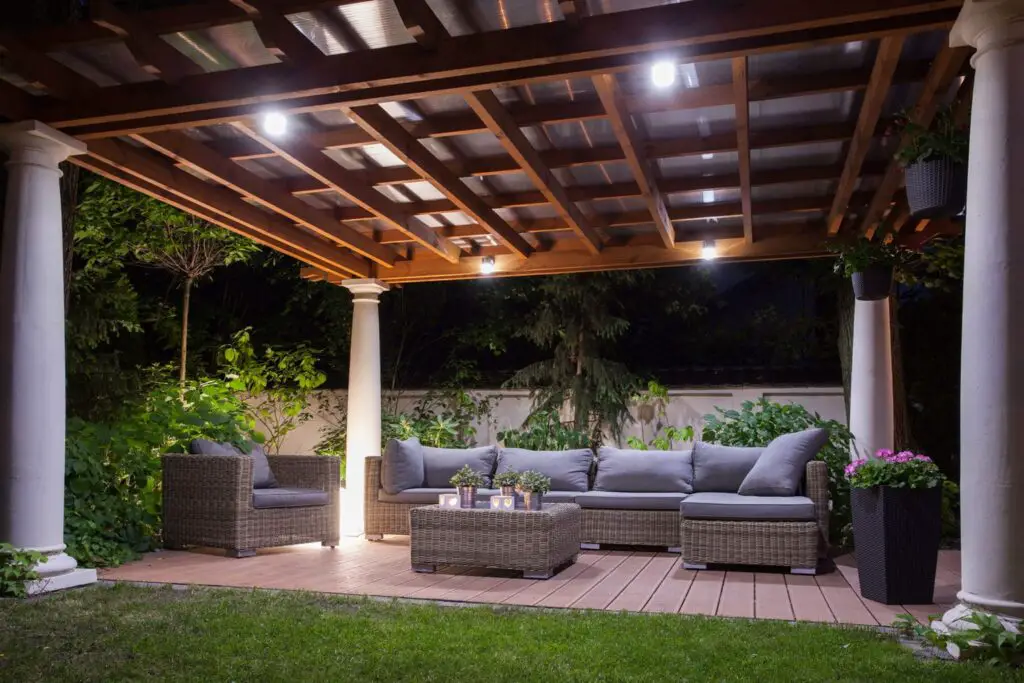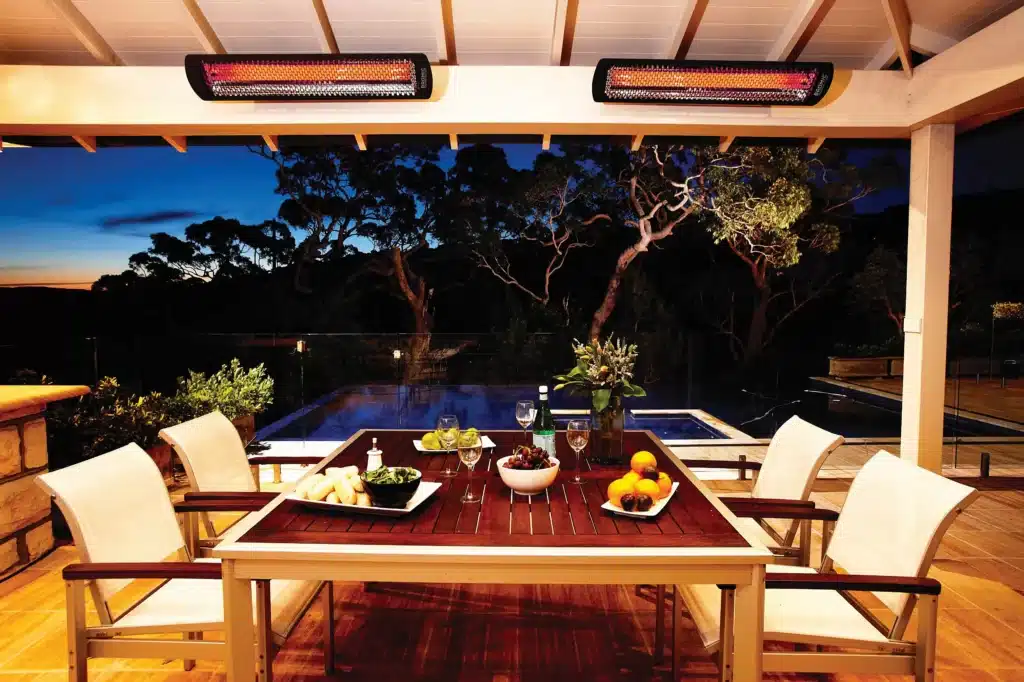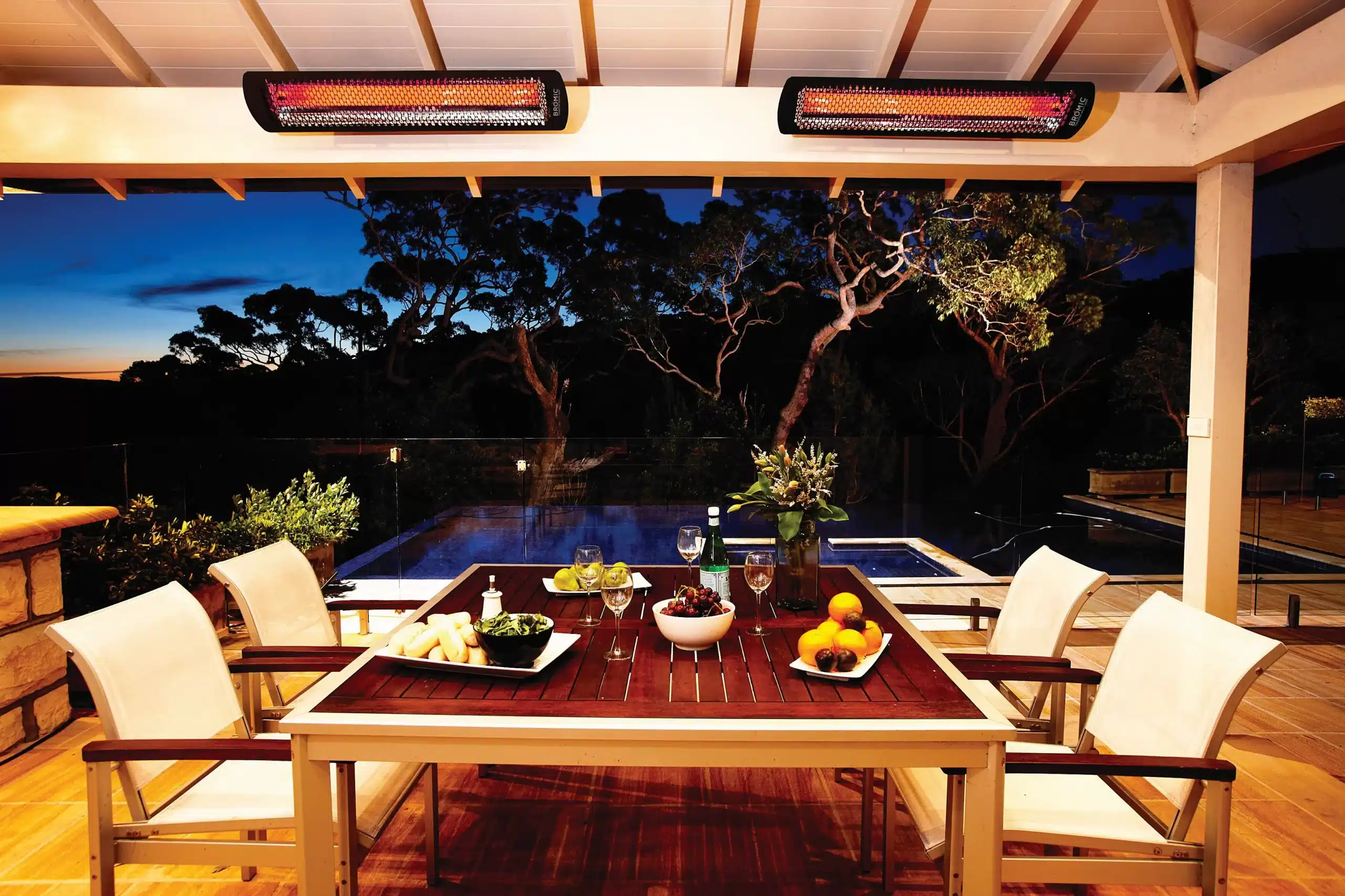How To Light Patio Heater
Introduction
How To Light Patio Heater: A patio heater can be the perfect addition to your outdoor space, allowing you to enjoy the outdoors even on chilly evenings. However, if you’re new to patio heaters, you may be wondering how to properly light and operate them. In this article, we will guide you through the process of lighting a patio heater, ensuring that you can safely and efficiently enjoy the warmth it provides.
Firstly, it’s important to understand the different types of patio heaters available. The most common types are propane and electric patio heaters. Propane heaters are fueled by propane gas, which is stored in a tank and ignited to produce heat. Electric heaters, on the other hand, are powered by electricity and use heating elements to generate warmth. The method of lighting and operating these heaters may vary, so it’s essential to know which type you have before proceeding.
If you have a propane patio slab, the first step is to ensure that the propane tank is securely connected and turned on. Next, locate the control knob or valve on the heater and turn it to the “”Pilot”” position. Press and hold the control knob while simultaneously pressing the ignition button or striking a match near the pilot light. Once the pilot light is lit, continue holding the control knob for about 30 seconds to allow the thermocouple to heat up. After this time, release the control knob and turn it to the desired heat setting. Your patio heater should now be fully operational and emitting a warm and comforting glow.

How are patio heaters powered?
Patio heaters are a popular addition to outdoor spaces, providing warmth and comfort during cooler months. These heaters are designed to extend the usability of patios, decks, and other outdoor areas by providing a source of heat. One of the key considerations when choosing a patio heater is the power source. Patio heaters can be powered by various means, each with its own advantages and limitations.
One common type of patio heater is powered by propane gas. These heaters typically have a gas tank attached to the base, which supplies fuel to the burner. Propane patio heaters are popular because they are portable and can be easily moved around the outdoor space. They also provide a significant amount of heat and can warm up a large area. However, propane tanks need to be refilled or replaced regularly, which can be an inconvenience.
Another option for powering patio heaters is natural gas. These heaters are connected to a natural gas line, which provides a continuous supply of fuel. Natural gas patio heaters are more convenient in terms of fuel supply, as there is no need to refill or replace tanks. They also tend to be more cost-effective in the long run, as natural gas is generally cheaper than propane. However, the installation process for natural gas patio heaters can be more complex and may require professional assistance.
Electric patio heaters are another popular choice. These heaters are powered by electricity and can be plugged into a standard electrical outlet. Electric patio heaters are easy to use and require minimal maintenance. They also tend to be more energy-efficient compared to gas-powered heaters. However, electric patio heaters may not provide as much heat as their gas counterparts, and their range may be limited.
Why is the gas not flowing in my patio heater?
There can be several reasons why the gas is not flowing in your patio heater. It is important to identify the cause of the problem in order to fix it and ensure that your patio heater is working properly. In this article, we will discuss some common reasons why the gas may not be flowing in your patio heater and provide possible solutions.
One possible reason for the gas not flowing in your patio heater is a problem with the gas supply. Check if the gas tank is empty or if the gas valve is closed. If the tank is empty, you will need to refill it. If the gas valve is closed, simply open it to allow the gas to flow. It is also important to check if the gas hose is properly connected to the tank and the patio heater. If it is loose or damaged, it may be preventing the gas from flowing.
Another possible reason for the gas not flowing in your patio heater is a clogged or blocked gas line. Over time, dirt, debris, or insects can accumulate in the gas line, obstructing the flow of gas. To fix this issue, you can try cleaning the gas line using a pipe cleaner or compressed air. If the blockage is severe, you may need to replace the gas line altogether.
Additionally, a faulty regulator can also cause the gas to not flow in your patio heater. The regulator is responsible for controlling the pressure of the gas coming from the tank. If the regulator is not functioning properly, it may be restricting the flow of gas. In this case, you will need to replace the regulator to restore the gas flow.
Why is my propane heater not igniting?
There can be several reasons why your propane heater is not igniting. It is important to troubleshoot the issue to determine the cause and find a solution. Here are some possible reasons for the problem:
1. Lack of fuel: One of the most common reasons for a propane heater not igniting is a lack of fuel. Check the propane tank to ensure that it is not empty or low on fuel. If the tank is empty, you will need to refill it. If it is low on fuel, consider replacing the tank or refilling it.
2. Faulty ignition system: Another possible reason for the heater not igniting is a faulty ignition system. The ignition system is responsible for creating a spark to ignite the propane. If the ignition system is not working properly, it may need to be repaired or replaced. Check the ignition switch, spark igniter, and wiring for any signs of damage or malfunction.
3. Clogged burner or pilot tube: A clogged burner or pilot tube can also prevent the propane heater from igniting. Over time, dust, debris, or insects can accumulate in the burner or pilot tube, blocking the flow of propane. Clean the burner and pilot tube thoroughly to remove any obstructions. Use a small brush or compressed air to clear out any debris.
4. Gas valve issues: Problems with the gas valve can also cause the propane heater not to ignite. The gas valve controls the flow of propane to the burner. If the gas valve is not fully open or is faulty, it may prevent the propane from reaching the burner. Check the gas valve to ensure it is in the correct position and functioning properly.
Do patio heaters need electricity?
Yes, patio heaters do require electricity to function. Patio heaters are designed to provide warmth and comfort in outdoor spaces, such as patios, decks, or gardens. They come in various types, including electric, propane, and natural gas heaters. While propane and natural gas heaters rely on fuel sources, electric patio heaters need to be connected to an electrical power source.
Electric patio heaters are popular among homeowners and businesses due to their convenience and ease of use. They are typically powered by electricity from a standard outlet, making them a practical choice for outdoor heating. These heaters use heating elements, such as quartz tubes or halogen bulbs, to generate heat. When the heater is turned on, the heating element heats up and radiates warmth into the surrounding area.
One of the advantages of electric patio heaters is that they can be easily controlled and adjusted. Most electric heaters come with adjustable heat settings, allowing users to customize the level of warmth according to their preferences. Additionally, some models may have built-in timers or remote controls, making it even more convenient to operate the heater.
Another benefit of electric patio heaters is that they produce instant heat. Unlike propane or natural gas heaters, which may take some time to warm up, electric heaters provide immediate warmth as soon as they are turned on. This makes them ideal for situations where you need quick and efficient heating, such as during outdoor gatherings or events.
Why do people use patio heaters?
There are several reasons why people choose to use patio heaters. One of the main reasons is to extend the use of their outdoor spaces during colder months. Patios and outdoor areas are often underutilized during the fall and winter seasons due to the chilly temperatures. However, with the use of patio heaters, people can comfortably enjoy their outdoor spaces even when the weather is cooler.
Another reason why people use patio heaters is for entertainment purposes. Many individuals enjoy hosting outdoor gatherings and events, such as barbecues or parties, and having a patio heater allows them to do so even when the weather is not ideal. It provides a warm and cozy atmosphere for guests, making the outdoor space more inviting and comfortable.
Step 1: Before lighting the patio heater, ensure that it is placed on a stable and level surface away from any flammable materials. This will help prevent accidents and ensure the heater functions properly.
Step 2: Check the fuel supply. If you are using a propane patio heater, make sure the propane tank is securely connected and has enough fuel. For natural gas patio heaters, ensure the gas line is properly connected and the gas supply is turned on.
Step 3: Locate the ignition switch or control knob. This is usually found near the base of the patio heater. Turn the switch or knob to the “”Pilot”” position.
Step 4: Press and hold the ignition button or control knob while simultaneously pressing the piezo igniter button. This will create a spark that ignites the pilot flame.
Step 5: Once the pilot flame is lit, continue holding the ignition button or control knob for about 30 seconds to allow the thermocouple to heat up. The thermocouple is a safety device that detects the presence of a flame.
Are there any safety precautions to consider when lighting a patio heater?
When lighting a patio heater, it is important to take certain safety precautions to ensure the well-being of yourself and others. First and foremost, always read and follow the manufacturer’s instructions and guidelines for your specific patio heater model. These instructions will provide valuable information on how to safely operate and light the heater.
Before lighting the patio heater, make sure that the area around it is clear of any flammable materials such as leaves, paper, or furniture. It is also crucial to ensure that the heater is placed on a stable and level surface to prevent any accidents or tipping over. Additionally, keep a safe distance between the patio heater and any combustible objects, such as curtains or overhanging branches.
When lighting the patio heater, it is recommended to use a long-reach lighter or a fireplace match to prevent any potential burns. Avoid using regular matches or lighters as they may not provide enough distance between your hand and the flame. Once the heater is lit, never leave it unattended and always keep an eye on it to prevent any accidents or fire hazards.
What type of fuel is typically used for patio heaters?
Typically, patio heaters use either propane or natural gas as fuel. Propane is a popular choice because it is readily available and easy to use. It comes in portable tanks that can be easily connected to the heater. Propane patio heaters are also convenient because they can be moved around the patio or outdoor space as needed. Natural gas, on the other hand, is a more permanent option. It requires a dedicated gas line to be installed, which can be more expensive and time-consuming. However, once the gas line is in place, natural gas patio heaters provide a continuous fuel source without the need for refilling tanks.
Propane and natural gas are both clean-burning fuels that produce efficient heat for outdoor spaces. They are also relatively safe to use, as long as proper precautions are taken. It is important to follow the manufacturer’s instructions and guidelines for fuel usage and storage. Additionally, it is recommended to keep a spare tank of propane on hand in case the current tank runs out during use. Regular maintenance and inspections of the patio heater and fuel connections are also important to ensure safe and efficient operation.
Are there any specific tools or equipment needed to light a patio heater?
Yes, there are a few specific tools and equipment that are typically needed to properly light a patio heater. The first and most important tool is a long-reach lighter or a fireplace match. These tools are necessary because they allow you to safely ignite the pilot light without having to reach into the heater’s burner area. It is important to use a long-reach lighter or a fireplace match to prevent any potential accidents or injuries.
In addition to a long-reach lighter or a fireplace match, you may also need a screwdriver or an adjustable wrench. These tools are typically used to access and adjust the gas control valve, which is responsible for regulating the flow of gas to the burner. It is important to have these tools on hand in case you need to make any adjustments or repairs to the gas control valve.
Can you provide any troubleshooting tips for common issues when lighting a patio heater?
When it comes to lighting a patio heater, there can be a few common issues that may arise. One of the most common problems is a pilot light that won’t stay lit. If you’re experiencing this issue, the first thing you should check is the gas supply. Make sure the gas valve is fully open and that there is enough fuel in the tank. If the gas supply is not the issue, you may need to clean the pilot assembly. Use a small wire brush to remove any debris or buildup that may be preventing the pilot light from staying lit.
Another common issue is a patio heater that won’t ignite. If you’re having trouble getting your patio heater to ignite, the first thing you should check is the igniter. Make sure it is properly connected and in good working condition. If the igniter is working properly, but the heater still won’t ignite, you may need to clean the burner ports. Use a small brush or toothpick to remove any debris that may be blocking the ports. Additionally, check the fuel supply and make sure there is enough fuel in the tank.

Conclusion
Lighting a patio heater is a simple process that can be done by following a few easy steps. Whether you are using a propane or natural gas patio heater, the process is relatively the same. By taking the necessary precautions and following the manufacturer’s instructions, you can safely and efficiently light your patio heater.
First, it is important to ensure that your patio heater is in a well-ventilated area. This will help prevent the buildup of carbon monoxide and other harmful gases. It is also important to check for any leaks or damage to the gas line before attempting to light the heater. If you detect any leaks or damage, it is best to contact a professional for repairs.
After turning off the ignition switch, you will need to locate the gas valve on your patio heater. This is typically a lever or knob that controls the flow of gas to the burner. Turn the gas valve to the “”on”” position, but be sure to do so slowly and carefully. This will allow the gas to flow to the burner without causing any sudden bursts or flames.
Once the gas valve is in the “”on”” position, you can now attempt to light the patio heater. If you have an electric ignition system, simply push the ignition switch or knob to the “”on”” position. This will create a spark that will ignite the gas and produce a flame. If you have a manual ignition system, you will need to use a long lighter or match to ignite the gas. Carefully hold the flame near the burner while slowly turning the gas valve to the “”on”” position. The gas should ignite and produce a flame.








